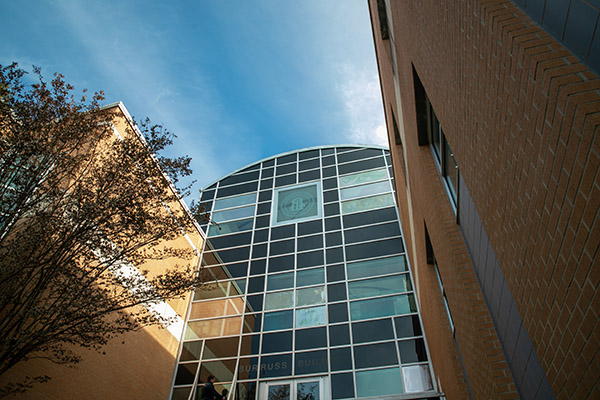
Cobb population growth ‘in line’ with region rate
KENNESAW, Ga. | Aug 24, 2015

New figures from the Atlanta Regional Commission show Cobb has 727,600 residents in 2015, an increase of about 10,500 people over last year.
Economist Roger Tutterow said the growth rate is average when compared to the rest of the 10-county metro Atlanta area.
“Cobb is growing roughly in-line with the rest of the region,” said Tutterow, a professor at Kennesaw State University.
The implications of the growth, he said, are good for many business sectors.
“Some business are very population dependent,” Tutterow said. “Obviously, as your population grows, it’s good for retailers because it means they’re going to have a larger potential customer base to sell into. It typically is good for people selling retail-oriented financial services, so banks tend to benefit from population increases. It does increase the demand for both health care and professional services.”
Across the 10-county region, population increased by 60,300 people from 2014 to 2015, the data shows, bringing the total to about 4.3 million people.
Mike Alexander, manager of the ARC’s research and analytics division, said population estimates are important because the figures aid in understanding and preparing for economic growth.
“The Atlanta region has had strong population growth due to our historically strong job market,” Alexander said. “In more recent years, especially during the last national recession when the Atlanta area was losing jobs, population growth slowed and was more dependent on natural population increase (births) than in-migration.”
Cobb population growth slows
The Atlanta region shows an overall growth rate of 1.41 percent, which is just below the Cobb growth rate of 1.46 percent, Tutterow said.
For decades, up until about the year 2000, Cobb saw significant growth in population, rising from 196,793 people in 1970, to 607,751 in 2000, data from the ARC shows.
“In Cobb’s case, it’s a pretty understood dynamic,” Tutterow said. “Where Cobb was clearly one of the fastest growing counties in the state in the 1980s, for example, as it has matured, its growth rate has moderated and moved closer toward the mean.”
With the third largest total population in the area, Cobb saw the third highest increase in the number of people who lived there from 2014 to 2015, ARC figures show.
Fulton ranks first, and Gwinnett second for both population overall and population growth over the past year.
“Cobb has historically been a leader in population growth for numerous reasons, including overall community quality of life, proximity to job centers, quality of the county education system and the relative cost of housing and community services,” Alexander said. “Cobb is growing due to natural increase and due to in-migration, but it has been more dependent on natural increase since the recession.”
While Cobb’s population continues to increase, Tutterow said the growth rate is only slightly above average, compared to other counties.
Out of the 10 counties and one city — Atlanta — included in the ARC’s report, Cobb came in at No. 5 for its growth rate from 2014 to 2015. Cherokee County led the pack with a growth rate of 2.55 percent over the past year, followed by Henry at 1.96 percent, Gwinnett at 1.86 percent, and Rockdale at 1.71 percent, the data shows.
Following after Cobb were Fulton at 1.28 percent, Atlanta at 1.12 percent, Fayette at 1.1 percent, Douglas at 1.03 percent, Clayton at .83 percent, and DeKalb at .77 percent.
“We are still certainly seeing an influx of population in Cobb,” Tutterow said. “We’re still creating jobs; we’re still building homes. But the county is maturing and, unlike Cherokee and Henry where their growth has largely been driven by the last decade or so, in Cobb we have been expanding our employment pretty consistently since the 1960s.”
Maturing growth
Tutterow said it’s normal for a county like Cobb to “mature” after experiencing fast growth for such a long period of time.
When a city such as Atlanta grows rapidly as it has over the past several decades, Tutterow said people will move into suburbs that are more affordable, such as Cobb.
Since Cobb has expanded and employment opportunities have grown in the area, Tutterow said “people who 35 years ago might have moved to Cobb County, are moving to Cherokee,” causing Cobb’s growth to grow slower than before.
“By doing so, they’re able to get into an environment where the land prices and cost of housing may be a little bit lower,” he said.
But, while Cobb’s growth rate isn’t at the level it used to be, Tutterow said it’s important to recognize that it is still growing at an above average rate for the Atlanta area.
“The pace of growth in Cobb is moderated some, but still remains roughly in line with that for the rest of the ARC,” Tutterow said. “It’s clearly faster growing than counties like Clayton and DeKalb and Douglas, but it’s not growing as quickly as Cherokee and Henry.”
The ARC, a regional planning and intergovernmental coordination agency for the 10 counties in metro Atlanta along with the city of Atlanta, is required by law to provide population estimates annually for its member counties and the city of Atlanta, according to information from the ARC. The population is estimated using data from several sources, including building permits, school enrollment trends and occupancy rates, ARC officials said.
Related Posts

Kennesaw State Partnership Equips Local Entrepreneurs with Tools for Success

Gathering Spot CEO Ryan Wilson on Building a Social Club to Inspire Connections.

Kennesaw State MBA student leveraging degree work for a cause

CEO Magazine Ranks Kennesaw State Executive MBA Top Program in Georgia, No. 11 in the World














